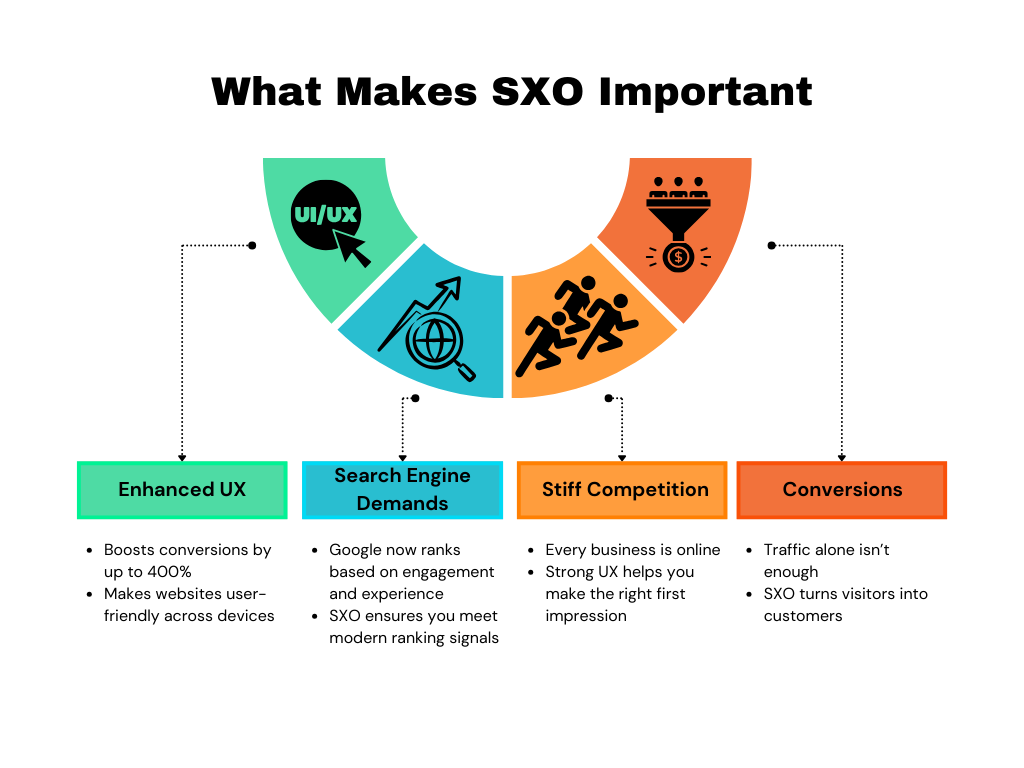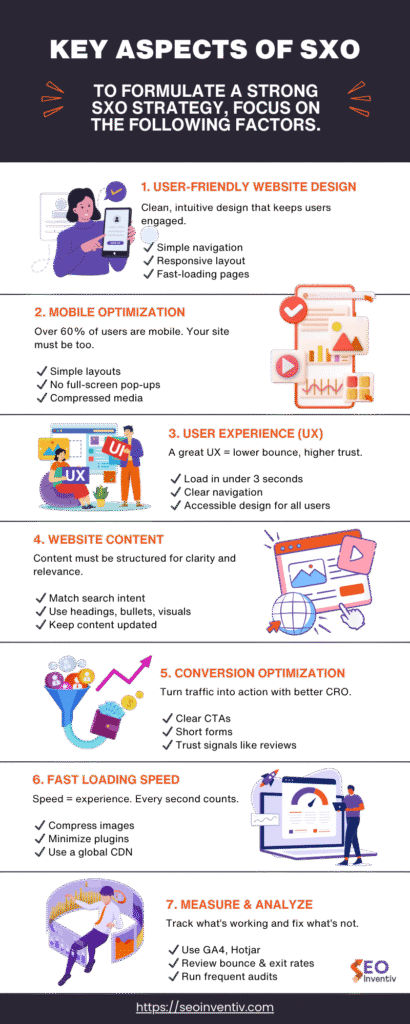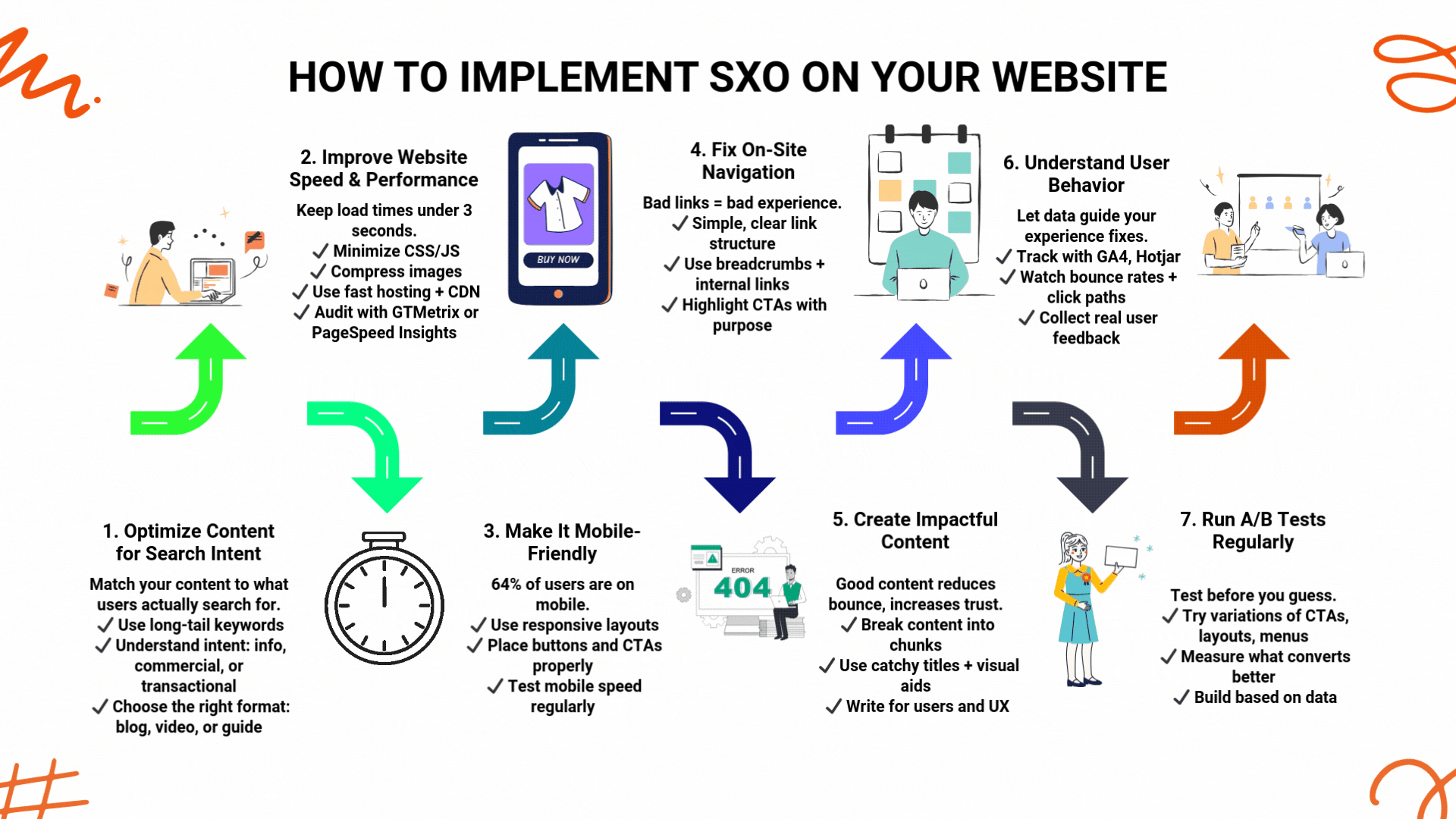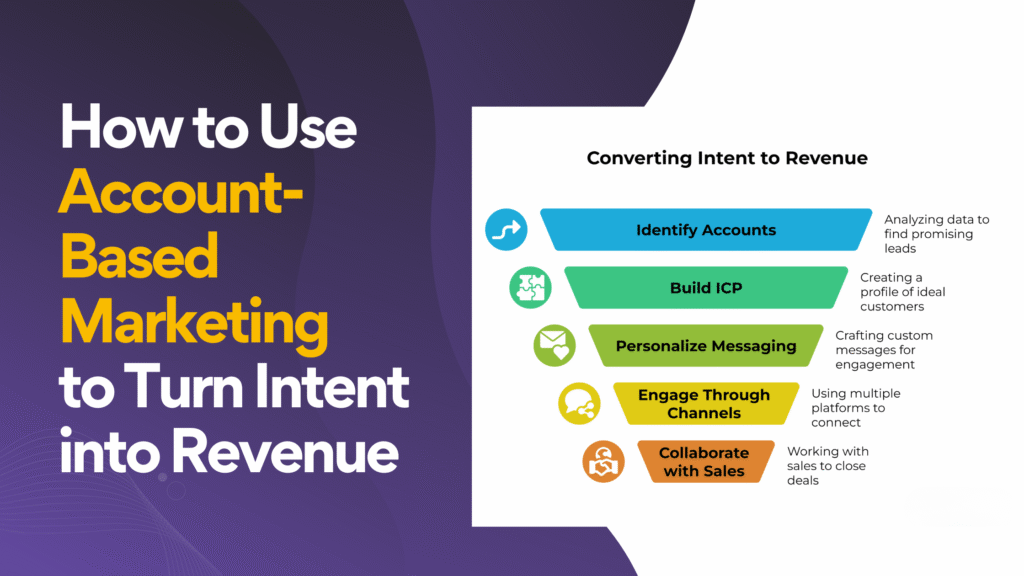Search Engine Optimization (SEO) has long been a crucial element for online visibility. But in today’s evolved digital world, relying only on SEO is no longer enough. Today, Search Experience Optimization (SXO) plays a massive role alongside effective SEO to get a website ranked and improve its online visibility.
Let’s dive deeper into what SXO is, and how you use it to its full potential to boost the online visibility of your business.
What is Search Experience Optimization(SXO)?
SXO is a technique to boost the user experience on the website, along with the search engine visibility. The primary goal of SXO is to convert visitors more rapidly and effectively. The SXO incorporates UI/UX part, SEO, content strategy, and conversion rate optimization.
In simple words, effective SXO not only lands more visitors on your website, but also boosts the user experience of your website, making the journey of visitors smoother.
With AI Overviews and generative engines prioritizing user-first content, it becomes even more important to balance search visibility with user experience. We’ve explained this shift in detail in our guide on Answer Engine Optimization (AEO) vs SEO, which shows how search intent and experience now work hand in hand.
What Makes SXO Important?

Google today no longer considers only the factors like visits, dwell time, and website content to rank a website. It also incorporates factors like retention rate, engagement rate, and the conversion rate to get a website ranked and displayed at the top.
Some key reasons why you should prioritize SXO in 2025 are:
- Enhanced Importance of UX: UX has become extremely important today. Be it the user-journey flow or the website’s compatibility on different device types, your website has to be user-friendly. Improving the overall UX design of a website can boost the conversion rates by 400%, which highlights the importance of SXO.
- Search Engine Demands: As mentioned, Google now considers various factors directly related to the user experience of a website to rank it. Only an effective SXO strategy can help you check off the checklist of the search engine.
- Stiff Competition: Today, almost every business has gone digital. Hence, competition is at its peak. Hence, your website must have a solid first impression, and effective SXO can help you immensely.
- Conversions: No matter what your website traffic is, it doesn’t serve any purpose if conversions are poor. Effective SXO can boost conversions considerably, hence actually serving the purpose for which you have built a website.
This became even more evident after the Google June 2025 Core Update, where many websites lost rankings simply because their content and experience weren’t aligned with what users expected.
Key Aspects of SXO

To formulate a strong SXO strategy, focus on the following factors.
User-Friendly Website Design
Your website design today is way more important than ever. If you are optimizing your website for SXO, make sure that your website design is clean, intuitive, and user-friendly. Yes, the functionality of your website is crucial, but at the same time, your website design must be catchy enough to make visitors stay on your website.
Some key aspects to maintain a user-friendly website design are:
- Navigation – Your website must have a simple and consistent navigation. Try to keep it clear, avoid too many elements, and if possible, keep it sticky.
- Mobile Optimization – Your website elements must be consistent & clearly displayed in mobile devices too. Focus efficiently on responsive optimization.
- Ensure Faster Loading Time – The faster your website is, the smoother the experience it will provide. Try to minimize CSS & JS along with ensuring that your website doesn’t have unnecessary graphics.
Mobile Optimization
A majority of visitors on your website would be from mobile devices. Hence, your website has to be mobile optimized and consistent across all browsers.
Some reliable ways to optimize your website for mobile devices are:
- Media Optimization – Media optimization is a key concept to ensure that your website is optimized for mobile devices. Make sure to use media only when required. Avoid using too large files as it won’t only degrade the overall view but also impact website performance too.
- Keep the Layout Simple – When you crowd a page too much with too many texts or buttons, it becomes difficult for small screens to accommodate them all. Keep the layout as simple as you can and don’t make it too overwhelming for mobile devices.
- Avoid Pop-Ups – Pop-ups on mobile devices often block the entire screen and frustrate users. Avoid adding them if you can, specifically, on mobile devices.
User Experience (UX)
Google widely considers the user experience to be a crucial element in getting a website ranked. Plus, the smooth user experience on your website boosts the chances of traffic retention considerably. After all, no one would like to visit a website with poor UX again and again.
Some key UX approaches you should consider are
- Website loading – try to make your website load entirely under 3 seconds
- Correct navigation – every link must navigate users to the correct page. Make sure that your website doesn’t have a 404 error page
- Intuitive graphics – every graphic used on your website must convey a crisp and clear message. Make it more engaging and something that raises curiosity
- Accessibility – your website should be easily accessible. Try to provide accessibility such that it becomes easy for even a visually impaired person to access your website.
Website Content
Gone are the days when just your content quality was enough to keep your website engaging. Today, several other factors like the content structure, tone, and efficient optimization are crucial to make your content win your website.
Some key elements crucial for good content are:
- Relevance – update your content regularly with fresh data to keep it relevant
- Intent – make your content match the user’s search intent by incorporating long-tail keywords
- Structure – use headings, bullets, and list form wherever required
- Visuals – content isn’t only about words. You need to use good visuals to convey a message in a way that it creates an impact on a visitor
Conversion Optimization
This is the primary purpose of your website, and you need to nail it not only to grow your business but to keep your website ranked and trusted for a longer period.
Some key aspects to boost your conversion optimization are:
- Clear CTA – it has to be short, crisp, and clear. The user should absolutely know what to do next
- Simple forms – avoid asking for any unwanted details. Keep the form short and simple
- Trust signals – your website must have reviews, testimonials, and your achievements
- Personalization – try adding recommendations, smart pop-ups, chat pop-ups, etc.
Maintain Fast Loading Speed of Website
As per Google’s criteria, the ideal loading speed of a website is 2 seconds. You can stretch it to the upper threshold time of 3 seconds. You might feel that 1 second doesn’t make any difference, but in this fast-moving world, it is more than enough to frustrate a user.
Some key ways to maintain the fast loading speed of your website are:
- Using Optimized Images – Resize images before you upload them. Compress it using the tools available, and make sure to use compressed images only.
- Limit Add-Ons – If you are using add-ons on your website, make sure not to use any unnecessary ones. Too many plugins can easily slow down your website.
- Use Content Delivery Network (CDN) – A CDN is something that stores your website on servers all over the world. A good CDN can boost your website speed considerably.
Measure & Analyze
Keeping track of results on a regular basis is a must to ensure that loopholes, if any, in your SXO strategy are recognized on a timely basis and you overcome them before they force you to tweak your entire SXO strategy.
Regular analysis is the last and most crucial element of any SXO strategy. It gives you a clear idea of your standings and helps you formulate the further SXO & even SEO strategy.
How Do You Implement SXO on Your Website?

Let’s check out some of the most effective strategies to implement SXO on your website.
- Optimize Your Content for Search Intent: Your content must exactly answer what the user is looking for. Using long-tail keywords and phrases wisely is paramount here.
Some primary ways to optimize your content for search intent are:
- Understand the searcher’s intent. Consider that the user’s search intent might be transactional, informational, or commercial, or navigational and try answering the common questions accordingly.
- Use advanced & efficient tools like Ahrefs, Semrush, and AnswerThePublic to understand the commonly asked questions and answer them in your content.
- Be right with your content type. Be it blogs, posts, podcasts, or videos, the content type you select must match your business domain and search intent revolving around the same.
- Ensure High Website Speed & Performance: As mentioned, your website should load entirely within 3 seconds so as to ensure that your bounce rate isn’t high. Remember, people today hate waiting, and your website shouldn’t be the one that keeps people waiting.
Some key techniques to improve website speed & performance are:
- Minimize JavaScript and CSS. Remove unwanted code or comment it out.
- Lazyload the images. It would improve the website’s performance considerably.
- Make sure that you are using fast hosting.
- Avoid using unnecessary elements on your website.
- Avoid using too large images & videos on your website.
- Use efficient tools like GTMetrix, Google Page Speed Insights, etc., to promptly identify and resolve the bottlenecks.
- Make the Website Mobile-Friendly: In 2025, around 64% of users open a website from a mobile device. Hence, your website has to be mobile-friendly as a major chunk of the audience will access it via a mobile device.
Some key things to keep in mind here are:
- Make your website responsive.
- Keep on checking the loading speed of the website on mobile regularly
- Make sure that all the clickable elements are placed correctly.
- Make sure scrollable elements are optimized correctly.
- Correct On-Site Navigation: Every link and button on your website must redirect users to the correct location. If not, chances are high that the search engine would consider your website as spam and penalize it.
Some key things to keep in mind are:
- Keep the architecture simple. Be it breadcrumbs, internal links, or menu elements, try to keep the link text self-explanatory.
- Be right with the search bar. Keep it simple yet attractive.
- Add clear CTAs to guide the user throughout the journey.
- Be Spot-On with Content: Content is the most crucial element of any website, always. If your content is good, the customer retention rate will be high, and the bounce rate will be low.
Some key elements to craft good content are:
- Craft SEO-friendly & UX-centric content. Use keywords wisely, and make sure it is simple to read and easily digestible.
- Break your content into smaller pieces.
- Provide answers directly to commonly asked questions by the users.
- Keep titles and meta tags catchy and enticing.
- Use graphics & visuals wisely.
And if you want to take it a step further, check out our guide on creating AI-SEO optimized content, where we explain how to align your writing with AI Overviews and generative engines.
- Understand User Behavior: Understanding user behavior on your website would help you with several aspects, like improving UI/UX on your website, crafting the content, strategizing CTAs, enhancing personalization, etc.
Some key tactics you can employ to dig deeper into user behaviour on your website are:
- Use the right tools like Google Analytics, Hotjar, etc.
- Analyze the bounce rate on your website
- Analyze the comments on your website, if any
- Take surveys, ask for feedback from the user themselves
- Run A/B Tests: A/B tests imply using different versions of several website components, comparing them, and figuring out what works best. Running multiple A/B tests on different components of your website can help you figure out the best.
Some key components on which you can run A/B tests are:
- CTAs
- Landing pages
- Layouts
- Menus
SXO vs SEO: What’s the Difference?
SEO is all about improving the website’s visibility in search results, while SXO goes a step further and focuses on the user experience of the website. While SEO and SXO do differ, SXO can be termed an expanded form of SEO.
Let’s understand some major differences between SEO & SXO with a table.
| Aspect | SEO | SXO |
| Focus | To improve the website’s visibility on search engines | To provide a smooth user experience on a website |
| Primary Objective | Increase visibility and website traffic | To convert website traffic into engagements and boost the retention rate |
| Target Audience | Search Engines | Users engaging with the website |
| Content Application | To rank within search results | To engage users |
| UI/UX Design | Secondary | Primary |
| Keyword Usage | Focuses on keyword research & placement | Focuses on covering search intent |
| Key Tools | Ahrefs, Semrush, Moz | Google Analytics, Hotjar |
| Measured Factors | Rankings, Impressions, CTR | Engagement Rate, Bounce Rate, User Satisfaction |
| Success Factors | Website Traffic | User Engagement Rate, Visitors Repeat Rate |
In today’s evolving digital world, SXO is no longer a buzzword. It’s a bridge between attracting traffic and conversions. Combining SEO & SXO efficiently is a key tactic to yield the desired results.
If you are looking to provide a smooth user experience on your website and want any professional assistance, let’s discuss. Our experts at SEOInventiv specialize in SXO and can ensure that your website provides top-notch performance, user experience, and design. Book your appointment with us today to convert your traffic to conversions.
Search Experience Optimization (SXO): People Also Ask
Usually, no. A traditional SEO strategy primarily focuses on getting a website ranked on search engine results. While SXO primarily covers user experience, SEO might cover it partially, but nailing it entirely demands a dedicated SXO strategy.
Yes. A great user experience on your website implies more trust and attention, and hence, higher chances of attracting backlinks from authentic sources.
Like SEO, SXO is a long-term game. You need to stay a bit patient while implementing SXO on your website. Hence, just wait and trust your strategy. In the meantime, keep a check on how users are interacting on your website, review engagement stats using GA4, see if they improved, analyze your competitors, and try to find flaws on your website and fix them. If you still don’t get the results, contact us, and we would be happy to help you out.
Every page on the website is important and demands SXO. However, you can start the SXO implementation with a landing page and then gradually move on to other pages of the website.
No. However, make sure that your content is scannable, easy to read & digest, and interactive. Make sure to use bullet points whenever required. Also, try to blend graphics wisely with your content.
SXO results can begin to appear within 3 to 6 months, especially if your site is already well-optimized and established. In lower-competition niches, you might notice improvements in a month or two, but new or highly competitive sites may take up to a year or more to show meaningful gains. Domain age, current site health, and the depth of your SXO efforts are key factors
 WhatsApp Now
WhatsApp Now
 +(91) 8700778618
+(91) 8700778618



